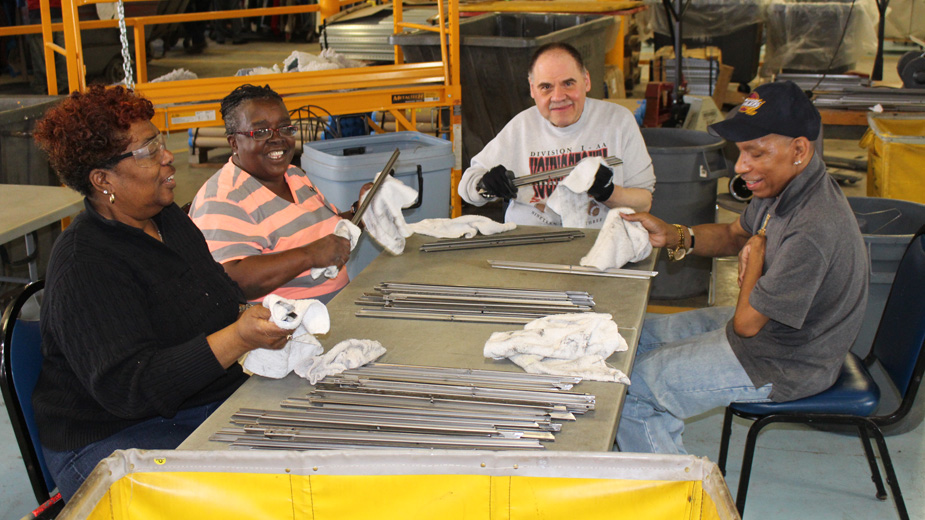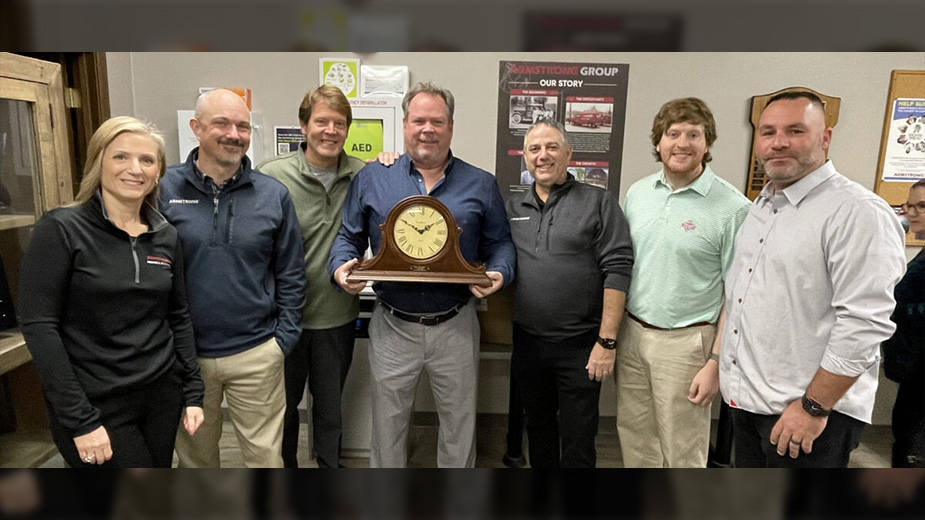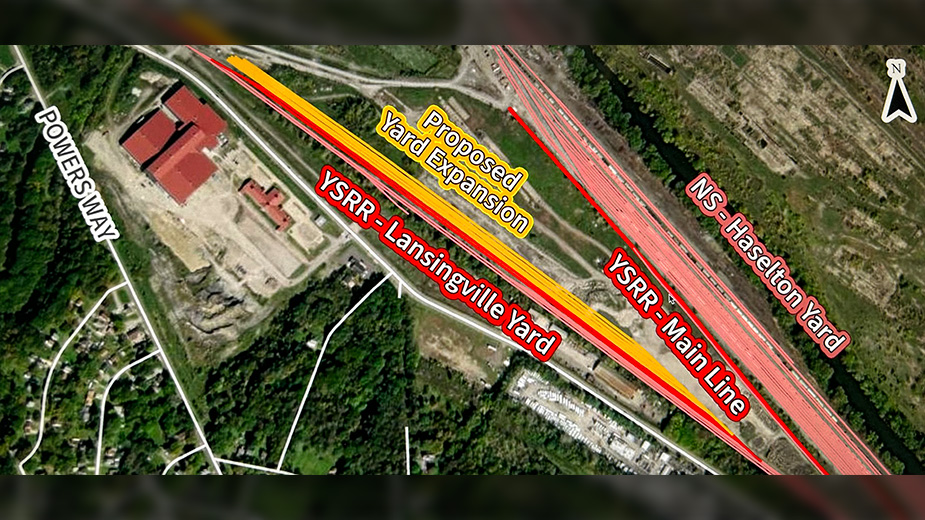Making an Impact Is Their Mission
By Peter H. Milliken
YOUNGSTOWN, Ohio – Before she was a contract supervisor for Youngstown Area Goodwill Industries, before she joined the Liberty-based organization, Otho Mae Braziel was a medical assistant. But that changed when her vision abruptly deteriorated and she was diagnosed with macular degeneration.
Braziel, who had worked in the medical industry 14 years, left her career because she didn’t want to put patients at risk. She was unemployed for two years.
Then she joined the Youngstown Society for the Blind and, in 1992, came to Goodwill when the society closed and was absorbed by Goodwill. For 26 years, Braziel has had a job with the organization.
Had it not been for Goodwill, “I wouldn’t be in the position that I am now,” Braziel says. “They encouraged me that I could do things. I didn’t think I could do a supervisor’s work.
“It helped me and made me feel useful,” she says of her Goodwill experience.
As someone with a disability, Braziel says she can empathize with other disabled workers and advise them on accommodations that can help them work.
“If they have a problem with something they say they can’t do, I’m able to tell them that there’s a certain way they can do the job,” Braziel explains.
Among the functions Goodwill assumed when it took over the Society for the Blind was the Radio Reading Service, which serves some 1,200 visually impaired and print-impaired subscribers who listen at home on receivers provided at no charge.
John Botch of Boardman, a retired librarian, is one of the more than 120 volunteers who read newspapers, magazines, books and other materials for the service, which is broadcast 24/7 on a WYSU-FM sideband.
“It’s an opportunity to use my skillset to help some other people out,” says Botch, who volunteers seven or eight hours a week for the reading service. “It helps the community and it sets an example for my children.”
Goodwill, which this year celebrates its 125th anniversary, is among the many nonprofits in the Mahoning Valley that have a clear impact on the communities they serve. Two others highlighted in this story are Second Harvest Food Bank of the Mahoning Valley and United Way of Youngstown and the Mahoning Valley.
The 2012 Economic Census, the most recent available, lists in Trumbull, Mahoning and Columbiana counties 487 tax-exempt organizations with about 13,300 employees and an annual payroll of $410 million. That represents about 4% of all establishments in the three-county area and 7% of the area’s workforce.
Last year, Second Harvest saw another record year in the quantity of food distributed to those in need: 10.6 million pounds, up from 5.3 million a decade ago. More than half of those who receive food from Second Harvest and its 150 partner organizations – churches, schools, shelters and soup kitchens, among others – are working full-time, minimum-wage jobs.
“A lot of people are under- employed in the Valley,” says Becky Miller, the food bank’s resource development manager.
A recent study by Feeding America, the national network of food banks of which Second Harvest is a member, found that 87,350 people, or 16% of the agency’s service area, are “food-insecure,” as it defines those unsure of when or where they’ll eat their next meal.
For the Community Food Warehouse of Mercer County in Sharon, Pa., there are 14,760 people facing food insecurity, or 12.8% of that county’s population. The national average food insecurity rate is 14%.
Second Harvest Food Bank is supported in part by the United Way of Youngstown and Mahoning Valley, which funds 30 community service organizations and operates its own programs such as Success By 6 and Success After 6. In recent years, the nonprofit has revamped its business model “to try to create some kind of sustained systemic change, and that’s working with children and families in poverty,” Executive Director Bob Hannon explains.
In addition to the Success programs, United Way started the Imagination Library in 2014. It provides free books monthly to children under five in Mahoning County. Also gaining in popularity is the annual Day of Caring, when volunteers engage in revitalization and beautification efforts in Youngstown. Last year, there were more than 850 registered volunteers, up from 400 in 2014.
“We’re seeing more people not only increasing their generosity monetarily, but also their generosity with their time,” says Stacia Erdos, as volunteers in mentorship and literacy programs. Erdos is vice president of strategic planning.
Adds Hannon, “We have volunteers that do mentoring, read [to children in schools], and take kids on field trips.”
Rather than donating to United Way because their employers request it, as was often done in the past, donors younger than 40 “want to be engaged in the work before they give their money,” he says. “They want to be able to say, ‘I volunteered at a school and read to children and I think it’s a worthwhile initiative. I’m now going to give through payroll deduction,’ ” Hannon says.
Across the nonprofit sector, donors and foundations are increasingly results-oriented and demanding more accountability from the nonprofits to which they’re considering contributing, says Shari Harrell, executive director of the Community Foundation of the Mahoning Valley. “There have to be outcomes. They have to be doing what they do well, and it should be measurable in some ways.”
Adds United Way’s Erdos, “They want to see results. In our pre-K summer program, their literacy scores jumped 13 points in four weeks.”
If nonprofits are to be measured by their results, Goodwill Industries has been successful on all fronts. Its 460 employees range from those such as Braziel, to those who work in its retail stores in Liberty, Warren, Austintown, Boardman, Salem and Calcutta, as well as Hermitage and New Castle across the state line, and those in the commercial laundry and janitorial departments. Those three sectors generate 94% of its revenue.
“Our goal over the next five years is to make it self-sufficient,” says Mark Gasser, president of the Gasser Chair Co. and immediate past president of Goodwill’s board of directors.
“There’s so much opportunity to teach valuable skills and to bring value and worth to people and the products that they touch,” Gasser says, as Goodwill employees sort, repair and sell donated goods.
“We believe in the power of people and the value of work,” he says. “It brings purpose to your life.”
Donations of clothing, household items and furniture for sale in Goodwill stores are more important than cash donations, says Executive Director Jim Freeze. Revenue from the sale of donated items allows Goodwill to pay its employees’ wages.
“We are a social enterprise business and a nonprofit. … When people donate, that allows us to employ populations who face disadvantages in our community” and to keep 4.2 million pounds of items annually from being dumped in a landfill, Freeze says.
“We’re paying out $3.8 million in wages and benefits a year to our team, so it provides that meaningful employment opportunity,” Freeze says.
He hopes to establish an e-commerce department by the end of this year to enable customers to buy donated items online and to teach Goodwill employees digital skills.
Those skills, Braziel says, are invaluable. “I find myself praising Goodwill for providing the opportunity for me to move up.”
Pictured at top: Otho Mae Braziel, left, supervises Clairessa Mills, Donnie Ferraro and Lloyd McCullough in Goodwill’s contracts department.
Copyright 2024 The Business Journal, Youngstown, Ohio.



